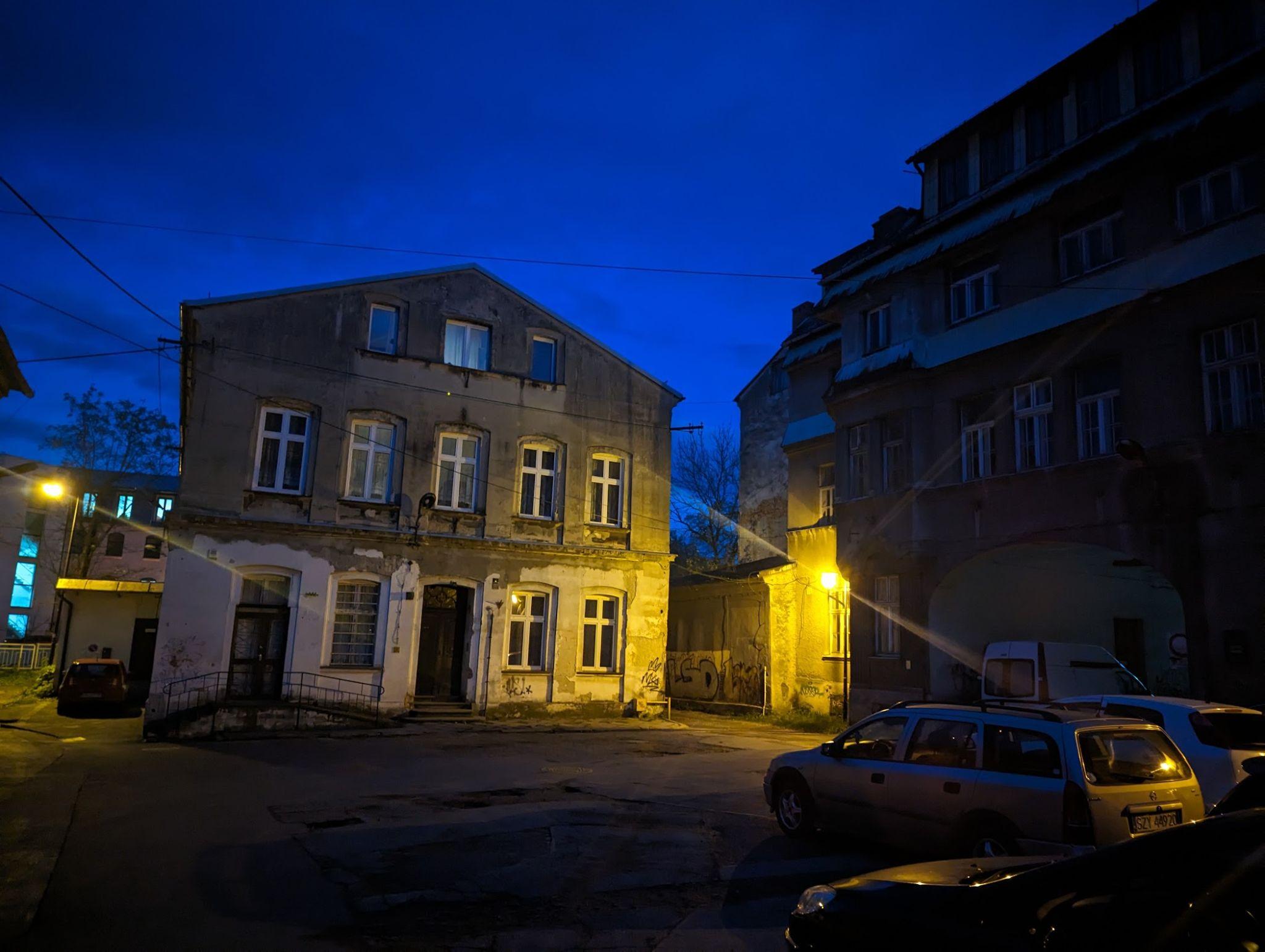Cities undergo constant transformation, and the reasons for their evolution vary widely. Take, for example, Brumov in the Czech Republic, which experienced a profound demographic shift following the upheaval of World War II. The city's population makeup changed dramatically, reflecting the broader societal shifts during that tumultuous period.
Similarly, Bielsko-Biala in Poland once stood as a hub of industry, particularly known for its thriving textile factories. However, the changing economic landscape has left these factories abandoned or repurposed, reflecting the ever-shifting industrial dynamics and the need for adaptation in a globalised economy.

An old factory building in Bielsko Biala which will be transformed into the new university campus
Natural disasters have also played a defining role in shaping cities. Bovec in Slovenia, for instance, grappled with the aftermath of three earthquakes in its recent history, each leaving lasting impacts on the city's infrastructure and community resilience.
Change is inherent, driven by various factors—historical, environmental, and intentional. Urban regeneration, a response to these changes, is both a necessity and a strategic choice for cities seeking growth or managing decline.
The concept of urban regeneration emerges as a critical response to these multifaceted changes. It represents not just a reaction to external forces but a deliberate strategy for cities to thrive in the face of shifting demographics, economic realities, and environmental challenges.
UR IMPACT, brings together ten European cities—Murcia (Spain), Kamza (Albania), Cinisello Balsamo (Italy), Hannut (Belgium), Targu-Frumos (Romania), Brumov (Czech Republic), Mertola (Portugal), Bovec (Slovenia), Ballymahon in Longford, (Ireland) and Bielsko-Biała (Poland). Over a comprehensive 30-month period, this URBACT Action planning network seeks to develop actionable plans focused on fostering social sustainability within urban regeneration projects.
At its core, UR IMPACT aims to empower local communities during the process of urban renewal. This initiative places a robust emphasis on social impact and community-centred practices, advocating for citizen well-being and ecological sustainability. It encourages collective decision-making and active civic engagement in the formulation and implementation of local regeneration strategies.
One prime example of this approach in action is showcased in Cinisello Balsamo, Italy. Here, the emphasis is on regenerating the Crocetta neighbourhood—a vibrant yet challenging area characterised by a transient population, high immigrant density, and a physical disconnect from the larger urban fabric. This ambitious project extends far beyond physical revitalization, aiming to address fundamental social issues such as cohesion, education, health, and inclusion.
Crocetta neighbourhood in Cinisello Balsamo, Italy
Three main methodological lines
The network will follow three main transversal social impact methodological lines: Intentionality, Additionality and Measurability1.
Intentionality: local authorities can integrate planning for social impact as part of their strategies. This means intentionally putting desired social outcomes in the beginning of the regeneration process. The design of intervention shall then be human and community centred. Local authorities should integrate long term thinking, also beyond the political timeframe.
Additionality: The public administration can promote participatory planning processes, which involve actively engaging citizens, community groups, and stakeholders in decision-making related to urban regeneration. This can be achieved through mechanisms such as public consultations, community workshops, and participatory design exercises.
Measurability: The public administration plays a crucial role in conducting social impact assessments as part of urban regeneration processes. Social impact assessment involves systematically evaluating the potential social consequences of regeneration projects before they are implemented. The public administration can lead this assessment process by defining relevant social indicators, collecting data, and involving experts in analysing the potential social impacts.
Several cities within the UR IMPACT network have already initiated impactful projects. Kamza, Albania, for instance, not only focused on post-earthquake reconstruction but also aimed to create a cohesive, integrated neighbourhood fostering education and municipal integration. Evaluating and refining these interventions is now a focal point for Kamza, seeking to distil effective methodologies and tools from their experiences.
A new neighbourhood in Kamza, Albania, built after an earthquake and as social inclusion strategy
Shift in urban regeneration
In defining social impact, UR IMPACT strives to catalyse positive changes in the lives of individuals, communities, and society at large. The initiative's holistic approach aims to foster a sense of place, facilitate the creation of inclusive public spaces, enhance social cohesion, promote healthier communities, ensure ecological well-being, and stimulate economic vitality.
Hannut, Belgium's exploration of a new urban area is driven by a deep consideration for identity, connectivity, and fostering a distinct sense of place—an alignment with the principles championed by Cinisello Balsamo.
The development of an impact assessment model necessitates extensive stakeholder engagement. This inclusive process aims to educate and encourage local administrations to actively involve communities in decision-making, considering a multitude of factors contributing to the complex challenges faced by cities.
Cities like Murcia in Spain, through their Murcia Urban DNA project, and Ballymahon in Ireland, leveraging innovative governance models, are trailblazers in engaging communities proactively during urban regeneration processes.
Sometimes the solution is in the problem: by adopting intricate strategies to address multifaceted issues, cities like Mertola in Portugal are demonstrating innovative solutions to combat desertification. This includes the establishment of research centres to study and mitigate the adverse effects of climate change, attracting young researchers and actively seeking solutions to preserve the city's heritage and environment. Similarly, Targu-Frumos in Romania seeks to engage citizens actively in addressing the mismanagement of urban spaces through community-oriented initiatives, such as urban walks aimed at mapping spaces and fostering community participation.
UR IMPACT signifies a paradigm shift in urban regeneration, emphasising social impact, community involvement, and holistic approaches. These endeavours exemplify a collective commitment among European cities to drive meaningful change and cultivate resilient, thriving urban environments.
1 Adaptation from https://www.triadi.it/
